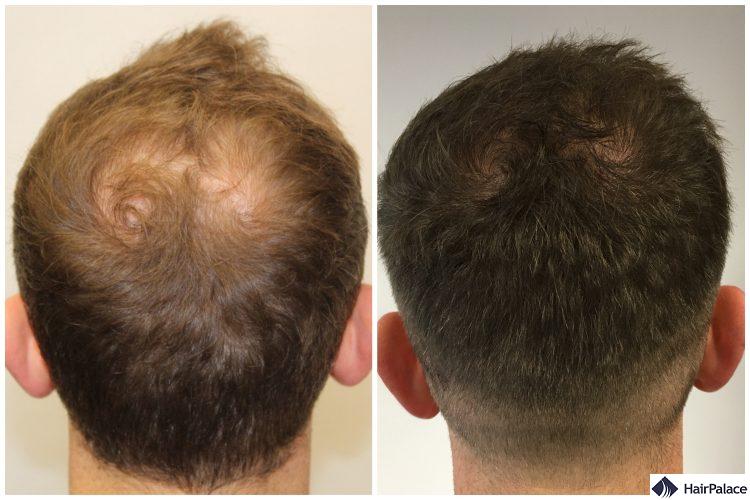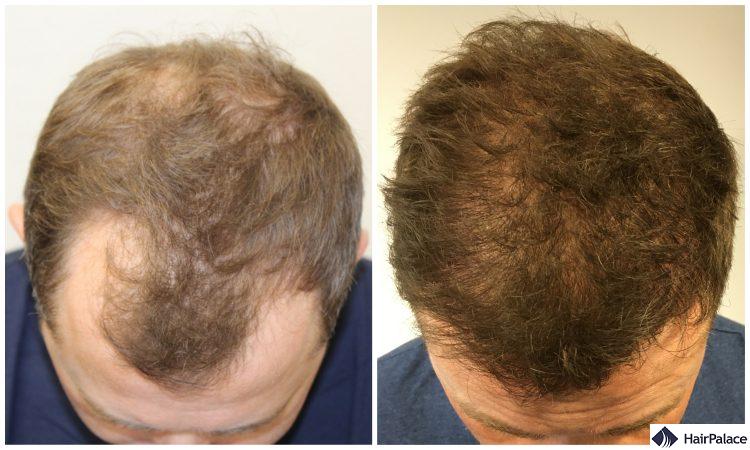Neil’s Stunning Hair Transplant Result After 12 Months
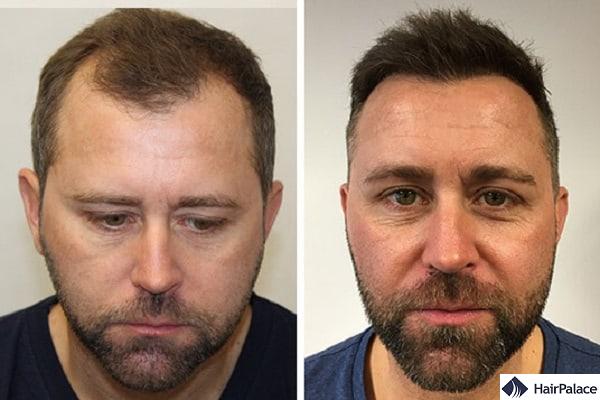
A receded hairline or a thinned out crown can make you look 10 years older.
And who wouldn’t be bothered by that their reflection doesn’t look as young as they are, as they feel?
Thus, it’s not surprising that each year more and more men look for options to restore their hair.
Hair transplant surgeries provide permanent results, and modern technologies allow pain-free, non-invasive procedures.
Neil opted for a FUE2 treatment at our clinic at the age of 39. In this post, we will show you how his hair improved after his surgery, step-by-step!
Neil’s hair before the hair transplant
Neil had been slowly losing his hair for around 10 years before he got in touch with our clinic in January 2018.
He sent us photos of his head, taken from various angles.
This allowed our doctors to properly assess the extent of his hair loss, his donor area and to see his natural density.
Based on the pictures, his hair loss reached a Norwood 3V with more extensive hair loss at the front, and minor thinning at the crown area:
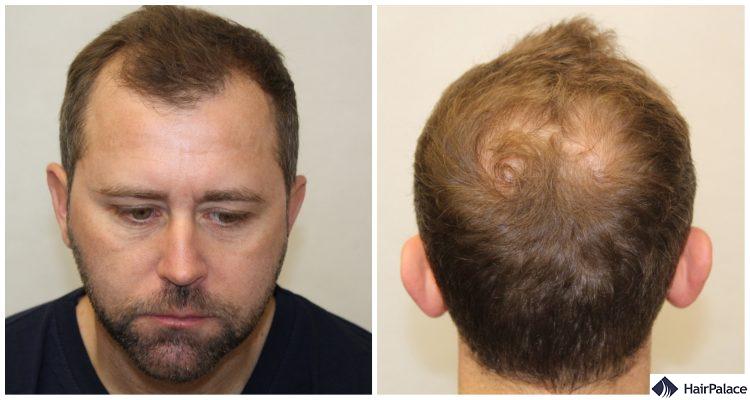
The frontal area alone required 5-6000 hairs, depending on the hairline he preferred.
Addressing the thinning at the crown called for an around 1000 hairs. Thus, we recommended Neil our 5-6000 hairs packages, noting that we will precise the number on the day of the surgery.
A natural, aesthetic hair transplant result requires a highly tailored approach.
Besides the characteristics and the condition of the hair and scalp, there are several individual aspects that a hair restoration specialist considers.
If you would like to get expert advice and a quote fitting your needs, we invite you to an in-depth consultation.
Neil’s FUE2 hair transplant
We performed Neil’s hair transplant on the 5-6th of December 2018 transplanting 7316 hairs in total.
In the vast majority of the cases, we can transplant 6000 hairs maximally in a single session.
While the quality of Neil’s donor area exceeded the initial expectations, having an exceptional donor area is not enough to transplant more if needed.
Though the hair transplant is considered non-invasive, it involves medication, which must also be kept in safe limits.
Additionally, medical conditions and/or other medications must also be considered.
In Neil’s case, it was both possible and safe to transplant more hairs, so we discussed the option with him, and he decided to go for it.
We have implanted 6100 hairs to the front, to fill up the hairline, and 1216 hairs to the crown to increase the density:
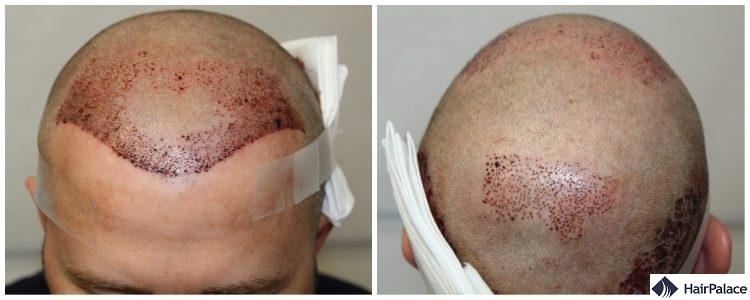
The post-op progress
After the surgery, the result evolves gradually, over 12-15 months.
We provide thorough aftercare; while we remain available to answer all questions after the surgery, we also check the implanted hairs regularly, at the main milestones.
The first part of the process is when the tiny wounds heal and the newly implanted hairs anchor in.
This is when both the scalp and the hairs are sensitive, so patients have to follow a few special instructions on haircare.
For a week, they must keep the scalp clean with sterile saline solution.
The scabs you see on the pictures below have to be gently soaked off during the second week:
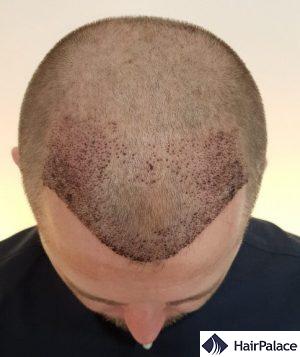
In the first 3 weeks, patients cannot cover their head; however, they must be careful with the weather; and they have to avoid physical exertion.
But after this period, they can return to their everyday routine.
The transplantation disrupts the growth cycle of the transplanted hair follicles.
From the 4th week, the roots enter telogen (resting) phase – at the end of this stage, the hair strands fall out.
As a result, patients experience hair fall between week 3 and month 3.
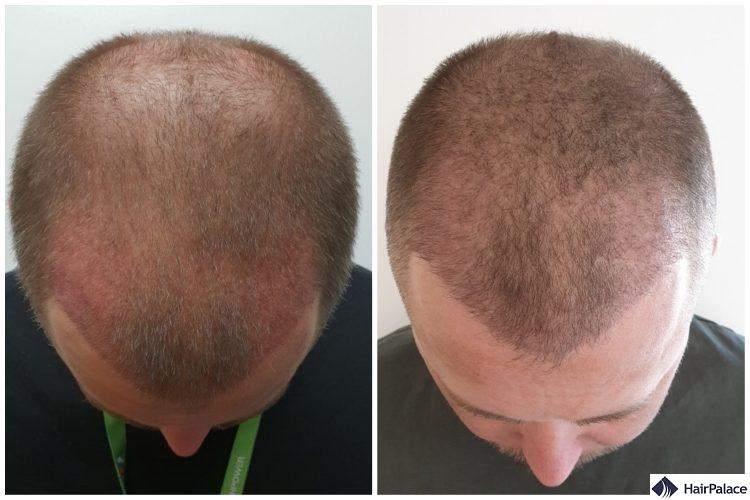
New hair growth on the implanted area typically begins from the 4th post-op month.
The change is gradual: as not all the hairs start growing at the exact same moment, the density improves month by month.
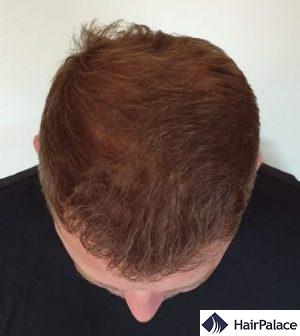
Neil’s hair transplant result
The result concludes 12-15 months after the hair transplant.
The final look is unique to each patient: besides the number of the implants and the quality of the procedure, the colour and texture of the hair will also influence the overall effect.
We checked Neil’s hair a year after his procedure and we were glad to learn that he was very happy with the result, it matches his expectations.
Based on the photos, we could agree that the result turned out great – the implanted hairs have regrown well, providing even, natural density all over:
